Another long break from blogging… my last post, on the absurdity of rising rents in San Francisco’s “affordable housing,” was written as part of an ongoing organizing effort behind the scenes at various buildings subject to the Mayor’s Office of Housing rules. More to come on that.
Meanwhile, since I wrote in December we watched the final flailing efforts of Trump to promote his imaginary idea of the world beyond his cult following, and fail for good after the surprising January 6 riots at the Capitol. Watching that (later) was weird, because it looked so familiar, but in a bizarro world version—they weren’t anarchists streaming through the halls of Congress, they were ultra-right racists and Trump cultists! A lot of ink has been spilled since the November election and especially since the January 6 riots and ensuing impeachment, most of which I find terribly boring. The endless handwringing by liberals about our sacred institutions being violated seems comical at best. The vitriolic focus on Trump as the cause of it all is also wildly off-base in my opinion… the guy is an inept, failed grifter who has used overt racism and assaults on objective reality to hone his message to his cult following, but that “following” was there all along, and has been seeking a “leader” long before Trump came along to fill the role. I recommend reading “The Trump Inheritance” by Fintan O’Toole in the New York Review of Books for a surprising look at the America First movement (and the weird 2005 tale of Trump’s first planned presidential run as a centrist with Oprah Winfrey as Veep, and a message of unity and racial tolerance!!). In the article O’Toole nails the underlying truth of the “voter fraud” myth: “The concern is not, at heart, that there are bogus votes, but that there are bogus voters, that much of the US is inhabited by people who are, politically speaking, counterfeit citizens,” referring obviously to anyone who is not a white, “real” heartland American… Anyway, I’ll come back to this topic in a later post. I’ve already written quite a bit about racism and the ongoing legacy of slavery and genocide in posts over the past year and a half… and more to come!
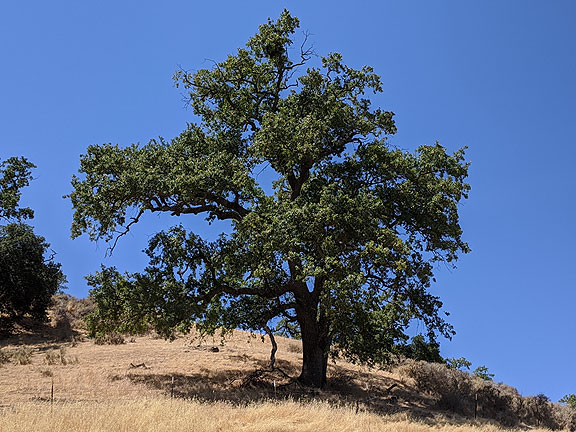
I am an avid reader. I’ve plowed through a lot of books this past year, somewhere around 40+. This post is about prehistory and today, and is crafted around five books I read in the recent past: Thus Spoke the Plant: A Remarkable Journey of Groundbreaking Scientific Discoveries and Personal Encounters with Plants; Tending the Wild: Native American Knowledge and the Management of California’s Natural Resources; Orderly Anarchy: Sociopolitical Evolution in Aboriginal California; The Scientific Method: An Evolution of Thinking from Darwin to Dewey; The Machine in America: A Social History of Technology; and lastly, an article in the 1997 California History sesquicentennial collection called “Serpent in the Garden: Environmental Change in Colonial California”. Whew!
The divergent realities we are living in today, with silo-ed bubbles of media and information creating largely unintelligible worlds living side by side, is just a spectacular version of a deeper reality that shapes our assumptions and worldviews. Most of us grow up learning some version of evolution that proposes that humans started as cavemen, eventually becoming skilled hunters (and wiping out all the prehistoric big game as proof of our growing intelligence), later domesticating various animals and developing agriculture which allowed humans to settle in permanent communities. Surpluses were created, monarchies and priesthoods arose with armies to protect them, cities developed, states emerged, and eventually wheels, wagons, trains, and cars came along, then we all got popsicles, pills, and smartphones and isn’t the modern world great?
This simplified timeline of history sounds silly on its face, and of course, it is. Especially when it comes to the received story about California, and the people who lived here for thousands of years and their relationship to nature. We have been propagandized by Franciscan missionaries, Gold Rush-era hucksters, and boosterish historians ever since the beginning of modern California. We’ll dig into that in a moment.
But there’s an even deeper issue to how our sense of the world has developed, how we have come to “know” things. Most of modern sensibility takes it for granted that the plant world, vegetal life, is unconscious, unaware, essentially inert and manipulable by humans. The logic of Christian Dominion comes to mind, where supposedly God gave humans dominion over all other forms of life, which by definition are inferior to and thus necessarily subordinate to humans. But what if that logic has blinded us to the dynamic, interactive, mutualistic forms of life all around us, not just the obvious intelligence we are increasingly aware of among animals, but also among plants?
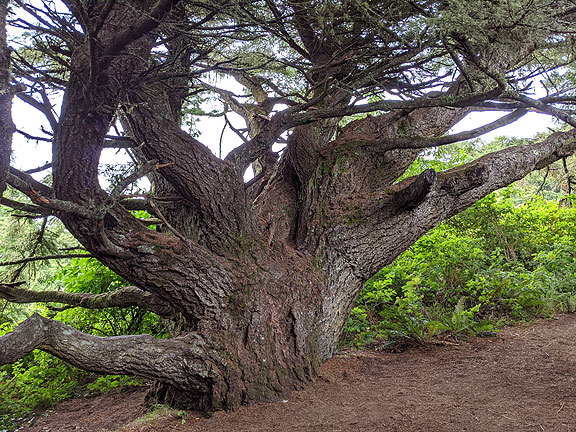
Years ago I read a book by a friend of mine, Jeremy Narby, called The Cosmic Serpent: DNA and the Origins of Knowledge, in which he went to the Amazon as a Stanford Ph.D. anthropologist to study how the people in the village he settled in knew so much about the plant life around them. To oversimplify his amazing story, he is taught that the plants themselves taught the people what they know. The local shaman gets him smoking wild tobacco, taking ayahuasca, and having first-hand experiences communicating with the plants and other creatures of the Amazon. Later Narby brings geneticists to the Amazon, who develop new understandings of DNA and genetic science while journeying on ayahuasca!
This book and the boundary-shattering sensibility it shares had remained in the background for me since I originally read it almost 20 years go. In December I was listening to Towards the Best of Our Knowledge, a favorite podcast, and I heard Monica Gagliano, another Ph.D. scientist talking about how she has learned to communicate with plants. It reminded me of Narby’s work, and I sought out her book, Thus Spoke the Plant: A Remarkable Journey of Groundbreaking Scientific Discoveries and Personal Encounters with Plants. It’s amazing too! She’s an Italian scientist who was finishing up her work on the Great Barrier Reef, specializing in coral and the fish who live there, when she started having vivid dreams about a shack, and a guy, somewhere in the Amazon. It was so intense that she woke up after a few days and bought a ticket from Australia, where she is based, to Peru, where she’d never been. After landing there, and taking a bus to the Amazon, she gets off in a small town and sees the house she’s been dreaming about and the guy, a local shaman. From there her story takes on incomprehensible qualities as she describes how she was encouraged to eat some bark of the big tree behind the house, which led to nonverbal communication with the tree. Eventually, after several years of visiting and doing the dieta, including ayahuasca and other psychoactive plants, and connecting with other trees and plants, she returns to her lab and creates experiments with pea plants (one of her interlocutors, another tree, told her NOT to use sunflowers as she had planned, but use the pea plant instead for her experiment!!) that prove plants can learn, adapt, and transmit knowledge in ways that exceed our ability to explain. As she says,
Not being open to consider the very nature of our reasoning and assumptions regarding the relationship between brains and memories leaves us no space to seek other possibilities… it is the formulation of the question itself that has been failing us all along. (p. 67)… The disarticulation of plants as subjects and their cultural (re)construction as objects of scientific exploration not only contradicts the emerging and expanded understanding of plant behavior, including matters of plant intelligence, agency, and intersubjectivity, but is also of monumental concern in regards to the ethical significance of human-plant relations. (p. 68)
This Italian woman is a longtime scientist. She’s not a spiritualist, or a delusional hippie, though her account of communicating with the plant world may lead a skeptic to see her that way:
In the middle of the Peruvian jungle, the Amazonian plants had spoken to me through numinous dreams and visions, telekinetic conversations and songs. As they had done for millennia, they had taught me of their role in supporting the physical, psycho-emotional, and spiritual growth of humanity at the individual, community, and planetary level. This understanding of plant-human communication is yet to fully breach the fortified walls of academia. (p. 26)
It sure hasn’t! Inspired by this book, I finally got around to reading Tending the Wild: Native American Knowledge and the Management of California’s Natural Resources by M. Kat Anderson (UC Press: 2005), which I had on my shelf for a long time (proving once again that my insatiable book-buying habit serves a purpose!). It turns out the Anderson’s book is revolutionary in itself! The received myth that California Indians were primitive “diggers” who lived in extreme poverty, rooting around hopelessly in the dirt for food is a derogatory legend created to justify the horrific genocide carried out in the mid-19th century. The myth starts earlier, with the Spanish settlers, who could not recognize what they were entering, neither in terms of the cultures they were encountering, nor in the amazingly sculpted and gardened landscapes they stumbled into. Early settlers were often hungry and unable to tap the food riches all around them, and within a few years, their own livestock and the plant life that came with them began to wreak havoc with the food-rich environment they heedlessly destroyed.
This inability to appreciate other cultures, other ways of living, of knowing, was hardly unique to the Spanish colonists or the American settlers who followed. It is foundational to our mental universe. Henry Cowles in his interesting book about the history of the scientific method The Scientific Method: An Evolution of Thinking from Darwin to Dewey (first line: “The scientific method does not exist. But “the scientific method” does), found this quote: “My experience,” [William] James wrote in a famous line, “is what I agree to attend to. Only those items which I notice shape my mind—without selective interest, experience is an utter chaos.” James was in the midst of strenuous disputes with the early theorists of science, which by the late 19th century were coalescing around hypotheses and inferences as not just useful tools for investigating the world, but defining behaviors of advanced human intelligence. Cowles’s book illuminates the steps that led to the emergence of science and its many subsets from before Darwin up to John Dewey in the early 20th century.

Everything, from everyday life to social movements, led back to science—redefined as an evolved tendency inside all of us, a natural feature of adaptive, embodied cognition. (p. 259)… Scientific method was not just the right tool for the job—it was the only tool for any job. (p. 260) … At the end of the age of methods, the image of science as embodied cognition became something both constrained and constraining, a set of steps rather than a description of lived reality. The rise of “the scientific method” was, in this sense, less a success than a tragedy. (p. 267)
Carroll Pursell is an Australian technology historian whose useful survey The Machine in America: A Social History of Technology unpacks the long path from an agricultural society to today’s post-industrial beehive. He also registers the moment when science took on quasi-religious importance in the culture, providing a metaphysics of its own to early capitalist America:
In a period torn by class struggle, violence in the workplace, cultural diversity, and general social unrest, “science” seemed to hold the promise not only of efficiency but also of impartiality and even inevitability. Technology appeared to be an effective and uncontroversial substitute for politics. What the new system of scientific technology delivered, however, was a vast increase in goods and services at the cost of a diminished degree of freedom and meaning. The vague but powerful notion of “efficiency” became the watchword of the Progressive Era. (p. 204)
Putting science and technology onto this depoliticized, objective pedestal reinforced using science and its method to codify a narrowing of knowledge, imposing an almost mechanical metaphor over the whimsical, open-minded, open-hearted capacity of the human being to learn through a wide range of perceptions, not all susceptible to narrow empirical verification. By our era in the early 21st century, notwithstanding efforts to reclaim lost knowledge and lost ways of knowing, common sense is brutally empirical and instrumental. Our era of surveillance capitalism depends on elaborate algorhythmic analyses of every detail of our lives, in pursuit of behavior modification towards specific profitable ends by the owners of our data. Cowles shows how the fixing of the scientific method was foundational for behaviorist theories:
Watsonian behaviorism was experiment taken to the extreme, a kind of pragmatism on steroids… [John] Watson had banished the mind in favor of behavior, only to have [B.F.] Skinner recolonize the mind in the name of behavior. After that, even the invisible phenomena of mind were measurable responses to external stimuli. To Skinner, this translation “restores some kind of balance” between introspection and behaviorism; the private world of the mind was recast in the language of the laboratory. Many disagreed, but Skinner’s behaviorism marked the triumph of method over mind, a grim apotheosis of the long-standing desire to see science as an adaptive method for all to use. (p. 273-274)
Along comes Monica Gagliano to defend science from the point of view of someone doing beyond-the-acceptable paradigm research:
…the chief characteristic that distinguishes the scientific method from other methods of exploring and acquiring knowledge about the world around us is its unwavering pledge to let reality speak for itself. Appropriately, a theory is supported when its predictions are confirmed by our observations of reality, and it is challenged, rectified, or even rejected when its predictions prove to be false, no matter how old and beloved that theory is. So the question that emerges is this: how can we justify, promote, and financially subsidize the use of plants in biotechnology and bioengineering when the premises of this scientific endeavor are rooted in the erroneous view of plants as insensitive organisms? … Under these circumstances, the scientific method demands us to rectify our approach to de-objectifying plants and no longer granting scientific legitimacy to GM plant research. (p. 107)
Going further, she uses her growing knowledge of and connection to the plant world to argue for a break with the scarcity and austerity dominating the neoliberal and conservative views of life:
Human prosperity is not in conflict with the prosperity of other species and the planet; on the contrary, thriving abundance is made-with, co-created with others in a continuity of exchanges and sharings. In this continuity, we have no conflict to resolve and no riddle to be solved. We only have choices to make. (p. 101)
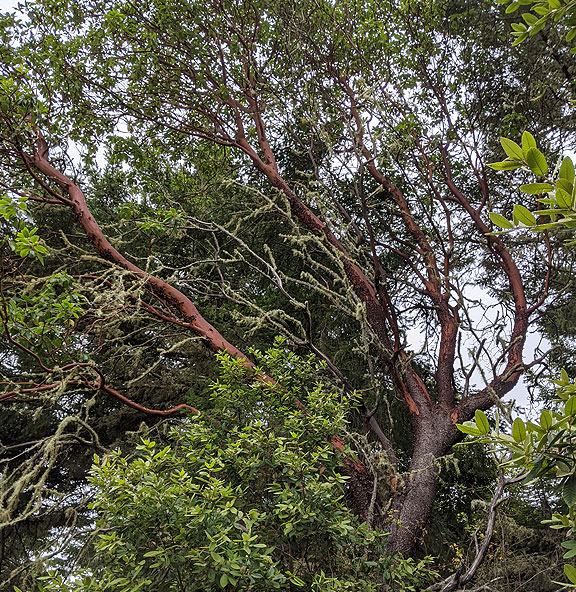
And that brings us back to the history of California. Because it seems that the people who lived here for thousands of years had figured this out. William Preston, writing in his article “Serpent in the Garden: Environmental Change in Colonial California” (in Contested Eden: California Before the Gold Rush, California History, Vol. LXXVI No. 2 and 3, Summer/Fall 1997, pp. 260-298), describes a relationship that concurs with Gagliano’s assertion:
The union of the human and non-human worlds in California was consciously recognized by all Indian peoples, and the reality was indelibly integrated into their world view. To the California Indian, the material and human world shared an equal spiritual partnership “where abundance came with thrift and restraint—but also a consequence of human disturbance.” The Indians recognized that the non-human world required their perpetual involvement to insure stability and order; however, the colonial invaders were oblivious to this dynamic relationship. The result was inadvertent and forced separation of the Indian from California’s non-human world, and the initiation of irrevocable environmental disorder.
M. Kat Anderson finds a similar orientation in her research:
In th[e view of California Indians], all non-human creatures are “kin” or “relatives,” nature is the embodiment of the human community, and all of nature’s denizens and elements—the plants, the animals, the rocks, and the water—are people. As “people,” plants and animals possessed intelligence, which meant that they could serve in the role of teachers and help humans in countless ways—relaying messages, forecasting the weather, teaching what is good to eat and what will cure an ailment. (p. 57) …Many creation myths tell of humans springing forth from seeds. Cattail seeds, in a Washoe legend, were turned into people; some became Miwok, others became Paiute, and still others became Washoe. These myths instruct humans that plants and people are from the same source and are related. (p. 249) … For indigenous cultures, intimate interaction with plants and animals comes from the rituals of prayer, offerings, songs, and ceremonies and through keen, long-term observation, communication, stewarding, and judicious use…. In traditional cultures, there are connections between the plant growing in its environment, its creative transformation into useful items, and the use itself. Today we have taken these three connected practices and made them into the distinct realms of science, industry, and private life. (p. 338)
Robert Bettinger is a traditional anthropologist at UC Davis in California. His book, Orderly Anarchy: Sociopolitical Evolution in Aboriginal California sounded exciting so I bought it. When it arrived I thumbed through it and was dismayed to see countless charts and statistical comparisons, grouping various California Indians by geographic region, by their kinship structures, by primary food sources, etc. The prose is quite dry too. But after reading Anderson and Gagliano, I felt there was something in this dry anthropology monograph that would contribute to my learning. Sure enough, there was. The main point is that California Indians were evolving in ways that disprove the linear assumptions of cultural theory. Based on a mostly plant-based diet, organized in anarchic family groups and clans rather than larger tribal formations, more densely populated than anywhere in pre-contact North America, the roots of today’s California individualist anarchistic “live and let live” culture turn out to be hundreds, if not thousands of years old!
…the western North American persistence of hunting and gathering and family band social organization does not reflect failure to evolve but merely evolution in a direction different from that predicted by traditional cultural theory. Indeed, by accepted biological standards, California-Great Basin hunter-gatherers were more highly evolved than their more complexly organized hunter-gatherer and agricultural counterparts; at least they were able to outcompete and replace them… (p. 227) Agriculture did not enter the Southwest at 1050 B.C., and the Great Basin at 50 B.C. full-blown. It evolved in sophisticated ways on a variety of fronts until its pre-contact collapse sometime between A.D. 1200 and 1400. (p. 28) … maize agriculture last scarcely 900 years in the eastern and southern Great Basin (A.D. 300-1200) and never made it into California or the western Great Basin at all. (p. 224)… At their peak in ethnographic California, acorns supported the highest population densities in North America, probably the highest ever achieved by hunter-gatherers anywhere at any time. (p. 110)
This last point about being sustained by acorns is probably true but also overstated. Because from Anderson’s work, it’s clear that pre-contact California Indians were eating a huge range of plants, seeds, and bulbs, not to mention seafood, river-based fish and wildlife, birds, and game. Anderson again:
The major focus in anthropology has been on plant manipulation for food viewed in isolation, not in the broader context of prehistoric subsistence systems and how these systems fit within and influence dynamic and diverse forest, woodland, shrub, and grassland ecosystems. (p. 334) … Indigenous peoples have been pigeonholed by social scientists into one of two categories, “hunter-gatherer” or “agriculturist,” obscuring the ancient role of many indigenous peoples as wildland managers and limiting their use of and impacts on nature to the two extremes of human intervention… Traditional management systems have influenced the size, extent, pattern, structure, and composition of the flora and fauna within a multitude of vegetation types throughout the state. When the first Europeans visited California, therefore, they did not find in many places a pristine, virtually uninhabited wilderness but rather a carefully tended “garden” that was the result of thousands of years of selective harvesting, tilling, burning, pruning, sowing, weeding, and transplanting. (p. 125) … the native sedge cultivation system, little changed since aboriginal times, is another native practice that blurs the distinction anthropologists make between agriculture and hunting and gathering. Although sedge is not domesticated, its cultivation is, and was, every bit as labor-intensive as the cultivation of a crop in an agricultural system. (p. 198) … Looking for agriculture in terms of civilization, early anthropologists were blind to wildlands shaped by centuries if not millennia of in-depth knowledge and careful management. These activities were swept under the encompassing label “hunting and gathering.” Thus a major historical distortion was created. (p. 252)
In Orderly Anarchy Bettinger argues that the success of small family units as the basis of society was thanks first to the arrival of the bow and arrow, which allowed decentralized hunting to take place that didn’t require large groups to succeed. Then the success of acorn-based groups led to the spread of the balanephagous economy, and, according to an unselfconscious Bettinger applying his own cultural concepts to pre-contact civilizations, the rise of private property. I’d argue that private property, properly understood, is a fundamentally capitalist social relation. But here Bettinger is using it in a more universal sense, in that some individuals or families were able to establish control over specific trees or groves and their output over time. Anderson provides a more useful description of this process:
California Indians embraced a different concept of ownership, one based on usufruct rights. Under this conception, if an area is used and tended, it becomes the domain of the gatherer. For example, throughout California, individuals or families repeatedly gathered from and cared for specific oak trees and groves, giving them usufruct rights to those resources. Under the usufruct system, each family had a combination of exclusive rights to certain resources and communal rights to other resources. (p. 133)
Interestingly, California Indians developed a type of money, in the form of shells. Again, it did not lead to capitalism, or accumulation for its own sake, but it facilitated trade across wide areas and across language and cultural differences. Bettinger says something interesting about it:
There is, in short, probably a connection between the development of money and the remarkable diversity of languages, foods, products, preferences, and social groups that characterize late prehistoric California. It is not surprising that money should develop in an area that accounts for less than 2% of the land but nearly 33% of all languages north of Mexico. (p. 186)
I’m a bit suspicious of his discussion of the existence and role of money in pre-contact California, since he is so busy applying modern homo economicus concepts backwards in time (they’re false in our time too!). He “spends” time explaining why pinyon harvesting had major “costs” on the back end, when the cache was opened and all the hard work of threshing, parching, hulling, more parching, and then grinding took place. “Acorns are even more back-loaded, collecting accounting for just under 5% of handling costs when immediately consumed. With storage, front-end acorn collecting and storing would likely account for no more than 10% of overall cost.” (p. 90)
This weird discussion sounds like someone talking about how efficient a supermarket is, but I assume he’s talking about caloric output for caloric return. Still, who the hell made any calculations like that, even vaguely, at that point in time? It’s just as sensible to argue for a symbiotic and synergistic connection between local peoples and a range of plants and animals that helped the humans develop an optimal mix of food sources and the techniques of landscape intervention to make them grow and flourish best (esp. fire), as well as resiliency for unexpected weather or other disruptions. Whether this involved the kind of direct nonverbal, kinetic communication Gagliano experienced in the Amazon, how could we ever know? But given the dense cultural life around prayer and ceremony associated with different plants, animals, and habitats, doesn’t that make as much or more sense than a silly cost-benefit calculus that hardly anyone does in our daily lives now—and we live in the most dominating era of capitalism?
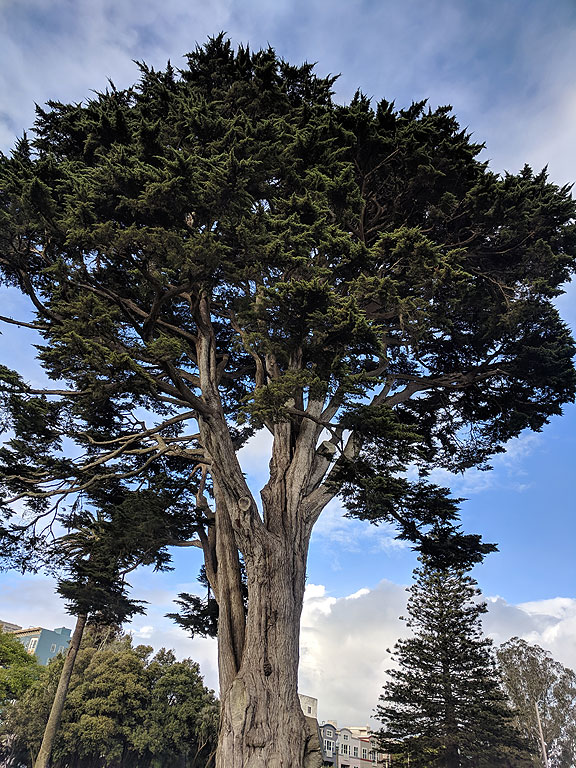
Finally, to bring this now lengthy post to a close, I’ve been giving tours and talking a lot about the pre-Spanish Bay Area for a few years now, and recognizing that we all live on unceded Ramaytush Ohlone territory here in the city of San Francisco. I have relied on some accounts by early European visitors who described the incredibly abundant wildlife here, and I just took that as evidence that it had been that way throughout prehistory. But that is probably wrong too! Anderson offers this typical account from 1868 as an early epigraph in her book:
“No country in the world was as well supplied by Nature, with food for man, as California, when first discovered by the Spaniards. Every one of its early visitors have left records to this effect—they all found its hills, valleys and plains filled with elk, deer, hares, rabbits, quail, and other animals fit for food; its rivers and lakes swarming with salmon, trout, and other fish, their beds and banks covered with mussels, clams, and other edible mollusca; the rocks on its seashores crowded with seal and otter; and its forests full of trees and plants, bearing acorns, nuts, seeds and berries.”
—Titus Fey Cronise, The Natural Wealth of California (1868) (p. 13)
Elsewhere she quotes Joaquin Miller describing “the Sacramento River as a ‘silver sheet’ because salmon were so abundant. He had seen the stream ‘so filled with salmon that [it] was impossible to force a horse across the current.’ In 1857 the Crescent City Herald reported that fish were so numerous three men found it impossible to row a skiff through them.
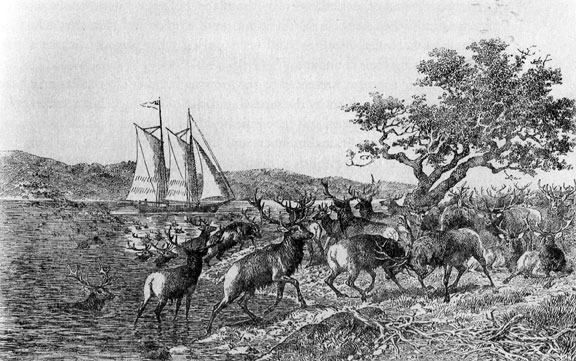
But it turns out that these vast numbers of fish, elk, bears, deer, rabbits, etc., were not the norm but rather a recent development after the steady demise of California Indian populations starting after European microbes began to make their way here long before the Spanish missions entered the picture. Preston in his fascinating article “Serpent in the Garden” describes it:
The explanation for the unusual presence of large game animals, prior to and after the time of missionization, is not surprising. Their populations simply irrupted as their chief predator, the California Indians, were reduced by protohistoric plague. Furthermore, colonial agencies, before and after 1769, dramatically reduced the constricting influence of the Indians on the animals, and their numbers continued to expand rapidly to unnatural proportions. In essence, the same colonial agencies that had proven so disastrous to the Indians provided a fertile setting for the nearly unfettered expansion of their former prey… The ecological imbalances and surge in the numbers of native animals triggered by the destruction of the Indians was also abetted by the presence of Old World animals. The combination of a vanishing Indian population and the widespread introduction and distribution of exotic fauna furnished a fecund environment where some species of animals flourished in numbers probably unknown in California since the Pleistocene Epoch. (p. 277-278)
Upwards of 300,000 Indians filled California in dense networks of kin-based settlements, eating a diet more than 50% plant based. Meat from game hunting made up a good third of Indian diets but the constant pressure of dense human populations kept animal populations in check (and made a superabundance of meat unattainable). But as new diseases took their toll, the California Indian population steadily fell, until by the mid-19th century, it was well under 100,000, “lower than at any time in the preceding millennium or two” according to Preston.
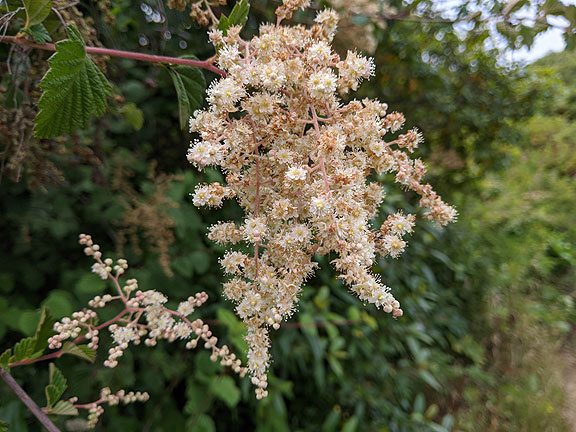
California Indians, before the invasion of the European biosphere, probably had the densest population living in anarchic balance with their neighbors, enjoying the natural abundance they had produced through thousands of years of “selective harvesting, tilling, burning, pruning, sowing, weeding, and transplanting,” as Anderson says. Now that we are on the cusp of catastrophic collapse of our industrialized agriculture system, our insane plumbing system, and are facing the likelihood of mega-droughts in the coming years, a process of recalibrating our daily lives to work with the natural systems in which we are embedded is long overdue. California Indians are still here, and are ready to work with landowners to restore the traditional practices that brought forth such abundance and aesthetic delight. But it will take a lot more than a few patches of remnant habitat, or even a “string of jewels” as some activists have sought to create across California.
The mental universe we accept as normal and inevitable is anything but. As Gagliano puts it, “…through a socially perpetuated conditioning system, the pure knowing of our infinite nature is squandered in exchange for the penitentiary of a distorted awareness.” (p. 78) Perhaps such an unbridled liberation is too much to hope for in most of our lives, penned in as we are by the necessities of survival on the terms of our bizarre social set-up. But at least we can begin to see that the frenzied balkanization of our hyper-partisan and hyper-narrow political world is actually two sides of the same blind coin. And blindness runs deep in time as well as our psychic space. Learning to see as legitimate and worthy of deeper investigation more of what mainstream science and academia ridicule would be a good start. Sensitizing ourselves to the profound mutuality and connectedness of life in all its forms would be a great foundation for the difficult changes ahead. Burning California and freezing Texas and flooding Florida all underscore that we have irreversibly entered the era of climate disasters and we better adapt quickly. Embracing our place in the web of life instead of trying to tear that web to pieces would be a logical beginning!
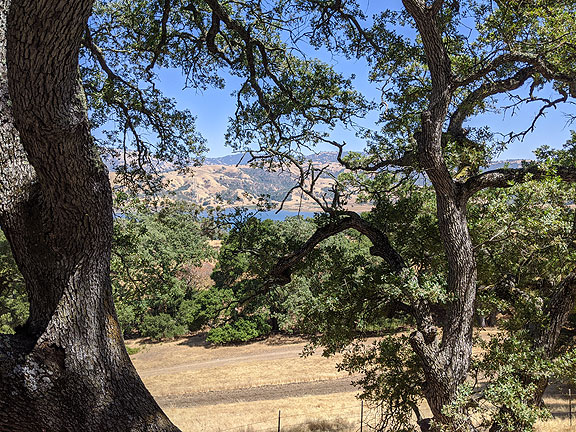
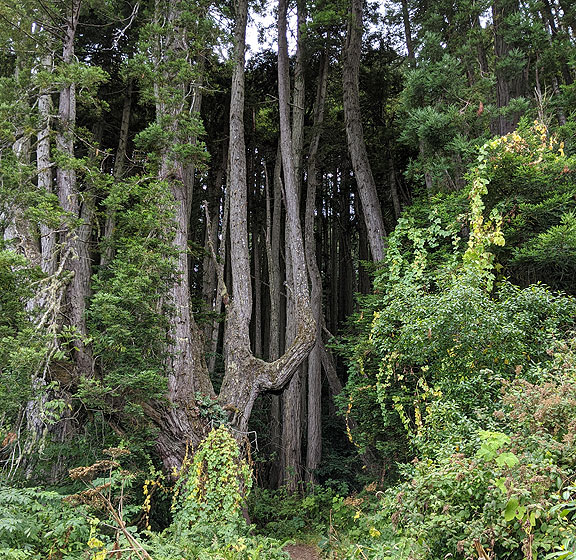
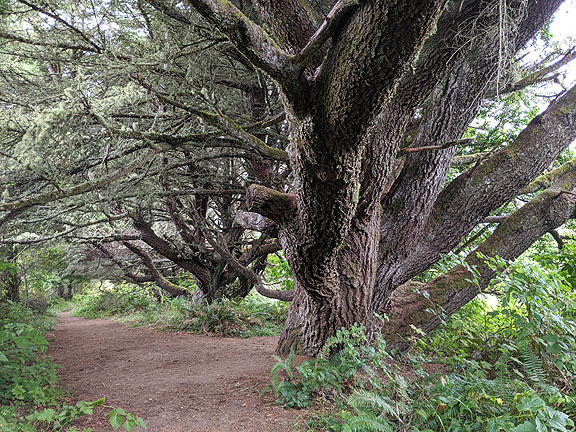












I would see the ‘scientific method’ as another human tool, and like any tool, it is just as amenable to misuse or misapplication as any other. To what purpose is the scientific method used? Making nuclear bombs? Figuring out how to reverse the degradation of wetlands? The scientific method might be used to provide information on the effects of human activities on the biosphere and the general environment, IF vested interests do not steer scientific inquiry away from lines of investigation that threaten profits or the human status quo.
Thanks for this blog. Your message of listening and learning and adapting to the natural world is one that is being lifted up by more voices in these times. This might seem tangential, but I would like to bring your attention to the situation in Pt. Reyes Seashore (which is,actually, our local national park.) The National Park Service is in the process of amending their park plan to increase the number of milk cows and beef cattle while adding other agricultural produces to the mix. The land in the cattle areas is deeply degraded; nothing native survives. Additionally, the Tule Elk on the seashore will be culled in favor of the ranches. There are a lot of folks, including local Miwok, who have a different vision of a restored natural Pt.Reyes with Tule elk roaming free. If this interests you, would be glad to provide more info.
Great to have you back